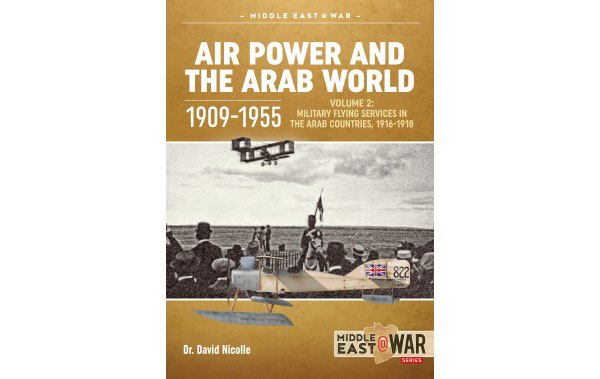
Air Power And The Arab World 1909-1955 Volume 2: Arab Side Shows, 1914-1918
By Chris Banyai-Riepl
Middle East @ War Series
Author: Dr David Nicolle
Publisher: Helion & Company
ISBN: 978-1-913118-76-1
Binding: Softcover
Pages: 80
The next installment in the series, this book adds to the story of early aviation in the Middle East. Like the first volume (which covered the military flying services in Arab nations), this book is thoroughly researched and very well written, detailing operations in the Middle East and across North Africa from Egypt to Morocco. As most of these countries were under some level of colonialism, this means that this book talks about the British, French, Italian, and Spanish involvement as well.
The book begins with the British and their involvement across the Arab world. The British were heavily involved in the Middle East, and following their loss at Gallipoli they felt the pressure to reaffirm themselves as a strong power in the region. This resulted in extensive use of aviation throughout the region, both in terms of military operations and as a visible morale booster. Arab nations allied to the Ottoman Empire, though, also had aircraft (as documented in Volume 1), so the British had a challenging time of it.
Italy also got involved in the Arab world, with Italian forces operating throughout the Libyan territory. By the time Italy had joined up with the Allies, most of their forces were pushed to the coastline, but aviation still formed an important part to fighting the conflicts going on in the region. The Ottoman forces pressed forward in many areas and it was up to Italian ground forces supported by Capronis and Maurice Farmans to not only hold the line but to push back.
Another nation to fly against the Ottoman forces was France, and like Italy they combined both land and sea aircraft types. French flying boats operated in Egypt and Algiers, and other fighting aircraft supported the French ground troops as they fought in the deserts across North Africa. Similarly, Spanish forces did the same, although their forces were focused mostly in the western regions such as Morocco.
With that many nations involved, keeping track of all the operations is challenging, but the author does a great job of telling the story. This is particularly well done when the operating theaters overlap, such as in Egypt. Knowing how all the various forces moved through the region is also documented through the use of maps, which helps point out the key landmarks referenced in the text. Further adding to the rich history are the multitude of photographs presented throughout the book, which show not only the variety of aircraft utilized but also some of the more unique markings worn by the planes in the field.
Combined with the first volume, this book lays a solid foundation for the rise of aviation in the Arab world and I look forward to seeing how this series progresses in the future. My thanks to Casemate Publishing for the review copy.
